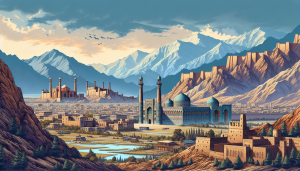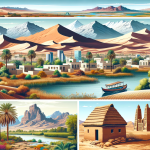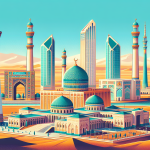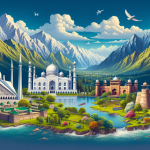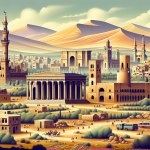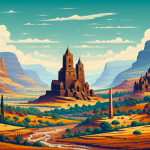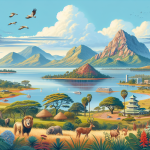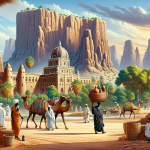Exploring Afghanistan: A Journey Through History, Culture, and Natural Beauty
Afghanistan, a landlocked country in South Asia, is often overlooked by travelers due to its turbulent history and ongoing conflicts. However, beneath its war-torn facade lies a country rich in history, culture, and natural beauty. From the ancient cities of Herat and Balkh to the breathtaking landscapes of the Panjshir Valley and the Bamiyan Buddhas, Afghanistan offers a unique and fascinating travel experience. This article delves into the various aspects that make Afghanistan a hidden gem for adventurous travelers, exploring its historical significance, cultural richness, and natural wonders. With a focus on SEO techniques advocated by Neil Patel, we’ll ensure that this comprehensive guide is optimized for search engines, making it an invaluable resource for anyone considering a journey to Afghanistan.
Historical Significance of Afghanistan
Afghanistan’s history spans thousands of years, marked by the rise and fall of various empires and civilizations. The country has been a crossroads of cultures, religions, and trade routes, significantly influencing its development.
Ancient Cities and Empires
One of the most compelling aspects of Afghanistan is its ancient cities. Herat, often referred to as the “Pearl of Khorasan,” boasts stunning Islamic architecture and a rich cultural heritage. The city was a major center of learning and culture during the Timurid Empire. Another city, Balkh, known as the “Mother of Cities,” is one of the oldest cities in the world and was once a major center of Zoroastrianism and Buddhism.
The Silk Road
Afghanistan’s location along the Silk Road has made it a melting pot of cultures and ideas. This ancient trade route connected the East and West, facilitating the exchange of goods, ideas, and cultures. Cities like Kandahar and Mazar-i-Sharif were key stops along the Silk Road, contributing to their historical and cultural development.
Cultural Richness of Afghanistan
Afghanistan’s cultural landscape is as diverse as its history. The country is home to various ethnic groups, each with its own unique traditions, languages, and customs.
Ethnic Diversity
The Pashtuns, Tajiks, Hazaras, and Uzbeks are some of the major ethnic groups in Afghanistan. Each group has its own language, traditional clothing, and customs, contributing to the country’s cultural mosaic. The Pashtuns, for example, are known for their Pashto language and Pashto music, while the Hazaras are famous for their traditional Hazara music and dance.
Festivals and Traditions
Afghanistan celebrates various festivals that reflect its rich cultural heritage. Nowruz, the Persian New Year, is one of the most important festivals, marked by feasts, music, and dance. Another significant festival is Eid-e-Milad, which celebrates the birth of the Prophet Muhammad. These festivals provide a glimpse into the vibrant cultural life of Afghanistan.
Natural Beauty of Afghanistan
Despite its arid climate, Afghanistan boasts a variety of stunning landscapes, from rugged mountains to lush valleys.
The Hindu Kush Mountains
The Hindu Kush mountain range is one of the most prominent natural features of Afghanistan. These mountains offer breathtaking views and are a haven for trekkers and adventure enthusiasts. The Panjshir Valley, located in the Hindu Kush, is particularly famous for its scenic beauty and historical significance.
The Wakhan Corridor
The Wakhan Corridor, a narrow strip of land in northeastern Afghanistan, is another natural wonder. This remote and rugged region is home to some of the most pristine landscapes in the country. The corridor is also a cultural melting pot, inhabited by the Wakhi and Kyrgyz people, who have preserved their traditional way of life.
Practical Information for Travelers
Traveling to Afghanistan requires careful planning and consideration due to safety concerns and logistical challenges.
Safety and Security
Before planning a trip to Afghanistan, it’s crucial to stay updated on the current security situation. The country has regions that are relatively stable, such as Kabul, Herat, and Mazar-i-Sharif, but it’s essential to avoid conflict-prone areas. Travelers should also register with their embassy and take necessary precautions to ensure their safety.
Visa and Travel Requirements
Obtaining a visa for Afghanistan can be a complex process, requiring an invitation letter and other documentation. It’s advisable to start the visa application process well in advance of your planned trip. Additionally, travelers should ensure they have all necessary vaccinations and health precautions.
Conclusion
Afghanistan is a country that defies easy categorization. Its rich history, diverse culture, and stunning natural landscapes make it a fascinating destination for those willing to venture off the beaten path. While the current security situation poses challenges, the rewards of exploring Afghanistan’s hidden gems are immeasurable. This comprehensive guide aims to provide travelers with the necessary information and inspiration to embark on a journey through this remarkable country. For more detailed and updated travel advice, consider visiting this external resource.
By optimizing this article for search engines using Neil Patel’s techniques, we aim to make it a valuable resource for anyone interested in exploring Afghanistan. Whether you’re a history buff, a culture enthusiast, or an adventure seeker, Afghanistan has something unique to offer.
